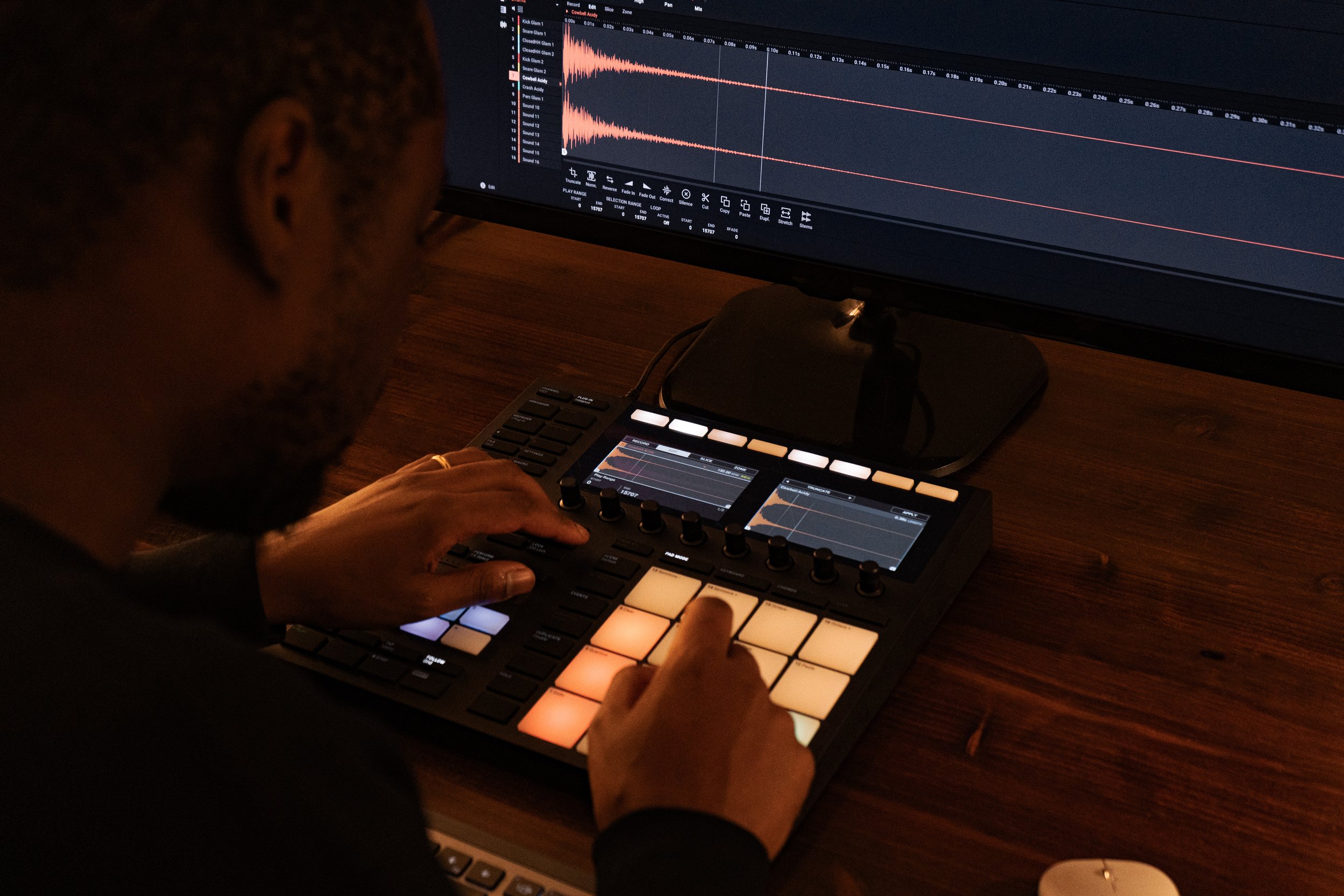Maschine 3 Software Unveiled: A Step Forward or Another Missed Opportunity?

When Native Instruments first launched Maschine in 2009, it redefined the landscape for beat-making and electronic music production. Blending hardware and software in a way that felt intuitive and powerful, Maschine quickly became a favorite for producers across genres—from hip-hop and electronic to experimental sounds. Its unique combination of hands-on control and in-depth sequencing tools allowed artists to explore creative workflows that other platforms didn’t quite offer at the time. Maschine’s groovebox-style approach gave producers the feel of classic MPCs with the modern twist of software integration, making it a go-to for crafting beats, designing sounds, and performing live. This versatility attracted a dedicated community who valued its hybrid approach to production. However, despite its popularity, Maschine has always faced its share of criticisms. Long-time users have voiced frustration over the lack of some key DAW features, such as advanced MIDI editing, a fully developed arranger, and real-time time-stretching. Over the years, many in the community have called for updates that would bring Maschine closer to a full-fledged DAW while retaining its groovebox feel. Now, with the release of Maschine 3 software, Native Instruments seems to be addressing these long-awaited requests. This update promises an array of new features and improvements, but does Maschine 3 deliver the experience users have been waiting for?
Disclosure: This blog contains affiliate links, which means Internet Tattoo may receive a commission if you purchase through these links at no additional cost to you.
Key New Features in Maschine 3
Improved Workflow Enhancements
Maschine 3’s workflow upgrades are designed to address long-standing user requests for a more intuitive experience. The updated piano roll is smoother and more DAW-like, finally enhancing MIDI editing to make melody crafting easier. The arranger has also been refined, now offering a clearer timeline structure that allows users a better at-a-glance view of their projects, improving both sequencing and sound design. These changes show Native Instruments’ responsiveness, but for some seasoned users, the improvements may feel incremental rather than transformative, especially when compared to the layout versatility in DAWs like Ableton Live.
New Tools and Functionalities
Maschine 3 introduces new synth engines and effects modules, expanding the sound design possibilities within the software. The hybrid approach, combining analog warmth with digital precision, brings more depth to Maschine’s library and could reduce reliance on third-party plugins. However, despite these enhancements, some users may feel that Maschine 3 still falls short of being a comprehensive DAW substitute. The new instruments and effects are versatile, but they don’t fundamentally change Maschine’s role as a groovebox-focused tool rather than a full DAW.
Performance and Compatibility Upgrades
For users handling complex projects, Maschine 3’s performance improvements are a welcome addition. The multicore support upgrade allows for smoother handling of multiple audio streams, reducing workflow interruptions and enhancing stability. Additionally, Maschine 3 is fully compatible with the latest operating systems, reducing compatibility issues that previously disrupted workflows. Yet, as Maschine grows, some limitations—like the absence of VST3 support and real-time time-stretching—may feel more noticeable, suggesting that Maschine may still have some catching up to do compared to DAWs with broader feature sets.
Does Maschine 3 Meet Long-Awaited Expectations?
Addressing User Frustrations
Community feedback around Maschine 2 consistently flagged areas where users felt limited or frustrated, especially with sequencing and arranging. The new timeline-based arranger in Maschine 3 is a clear response, aimed at bridging the gap between Maschine’s groovebox roots and full DAW functionality. While the layout improves navigation and offers more control over arrangements, some users may still feel certain essential features, like real-time time-stretching, are notably absent. Maschine 3’s changes show an attempt to address key gaps, though for some users, these updates may not fully realize the potential they were hoping for.
Native Instruments has taken some user feature requests seriously, but there are still areas that may feel left out. Maschine 3’s upgraded effects and new synth engines are a positive step, yet without VST3 support, it may still not serve as a complete solution for users who rely heavily on newer plugins. The refined workflow and compatibility are significant improvements, but Native Instruments’ selective approach may leave some hoping for a more extensive overhaul in future updates.
Backward Compatibility and Hardware Support
A significant issue for long-term Maschine users has been the lack of software support for earlier hardware models, such as the MK1 and MK2 units. Maschine 3 maintains compatibility with more recent models, but users with older gear may feel left behind by this shift. The lack of legacy hardware support is a divisive move, as some dedicated Maschine fans see this as an abrupt end for their trusted equipment. For users with newer models, however, the integration is smooth, enabling optimal use of Maschine 3’s new features.
Impact on the Maschine Ecosystem
The Maschine community has already begun to react with mixed opinions on forums and social media. Many users appreciate the dedication to improving core workflows, especially the timeline arranger and piano roll upgrades, which have long been points of contention. While these updates bring Maschine closer to traditional DAW functionality, some long-time users feel they still don’t make up for the absence of other high-demand features. It’s clear that Maschine 3 will spark further discussions as users dig into the new functionalities and weigh the pros and cons.
In a world where DAWs like Ableton Live and integrated tools like Akai’s MPC products set high standards for versatility, Maschine 3 has to carve out a distinct position. The new synth engines and workflow tools make it a stronger competitor, though it may still feel more groovebox-focused than DAW-centric. This positioning likely appeals to hybrid users who appreciate Maschine’s beat-making prowess but want more comprehensive production tools. Native Instruments seems to be aiming for a balance between DAW and groovebox, catering to users who want hands-on production tools without fully transitioning to a DAW environment.
Maschine 3 could signal a direction for Native Instruments, potentially laying the groundwork for future, more integrated features in the Maschine ecosystem. The emphasis on upgraded features within the Maschine framework suggests that Native Instruments is working towards a seamless blend of hardware and software experiences. While these updates show promise, they may ultimately feel like the foundation for a more integrated Maschine experience in the future. For dedicated users, this is exciting, even if it means waiting longer for the “perfect” setup.
Maschine 3 vs. the Competition: How Does It Stack Up?
Compared to other major DAWs and production platforms, Maschine 3 faces fierce competition. Ableton Live is perhaps the most direct alternative, celebrated for its seamless live performance capabilities, real-time time-stretching, and intuitive, non-linear workflow that appeals to both beginners and pros. Ableton’s versatility, especially in audio manipulation, makes it a strong choice for producers looking to work quickly across genres. While Maschine 3 now includes a more comprehensive arranger and improved timeline, it still lacks some hallmark Ableton features, like the ability to switch smoothly between live and arrangement views.
On the hardware-integrated side, Akai’s MPC products, like the MPC Live II, bring strong competition. With touchscreen navigation and a focus on performance and production, the MPC line appeals to sample-based genres and producers seeking a standalone experience. MPC’s extensive sample manipulation and robust standalone operation position it as a competitor for Maschine, particularly for users seeking an all-in-one production suite without a computer. Although Maschine 3 narrows the gap in workflow and functionality, these competitors still lead in areas critical to music producers, suggesting Maschine 3 may need further updates to fully catch up.
Another Cog in the Maschine
In the end, Maschine 3 feels like a mix of progress and missed opportunity. After over a decade of user feedback, this update brings refined features—such as the updated arranger, new synth engines, and effects—but stops short of delivering a truly transformative experience. For dedicated users, these additions may feel underwhelming, especially with the absence of advanced DAW features like real-time time-stretching and backward compatibility for older hardware.
So, is Maschine 3 right for you? For new users or those heavily invested in Native Instruments’ ecosystem, Maschine 3 may be worth exploring, especially if the hybrid setup and hands-on control align with your production style. But for long-time Maschine users, it’s worth weighing whether these incremental updates justify the cost. If you’re looking for a fully featured DAW alternative, you may still lean toward Ableton or other options with more depth. Ultimately, Maschine 3 offers polish and incremental improvement, but it may not be the game-changer that loyal users were hoping for.
Disclosure: This blog contains affiliate links, which means Internet Tattoo may receive a commission if you purchase through these links at no additional cost to you.



